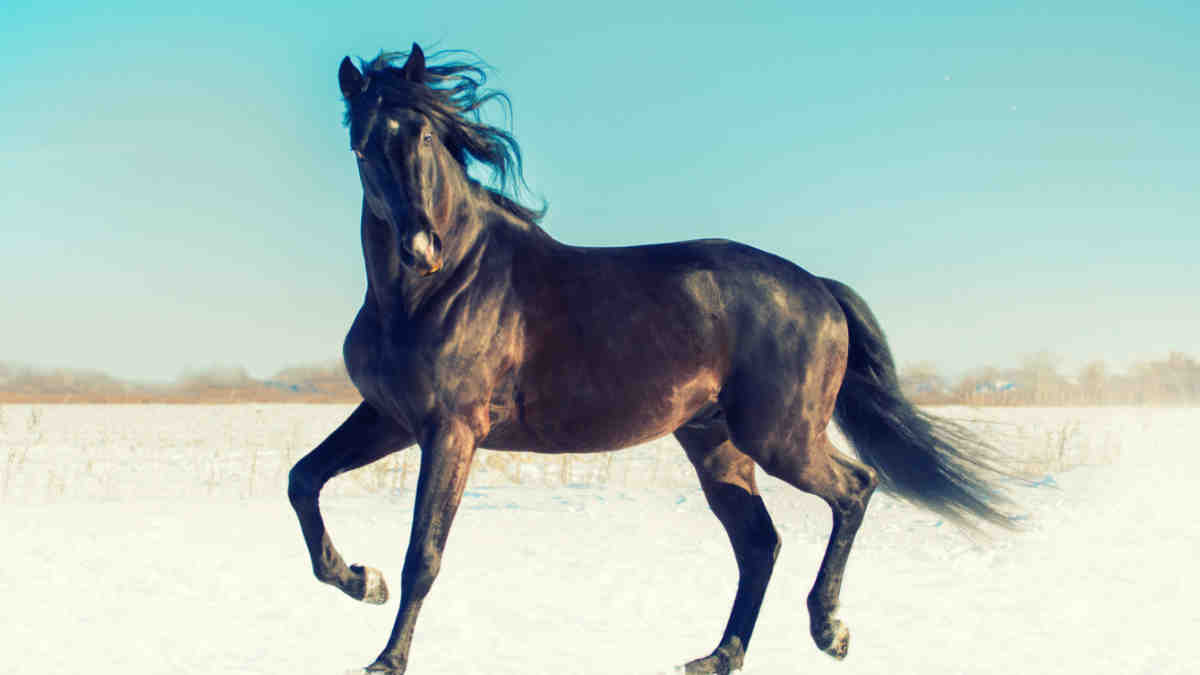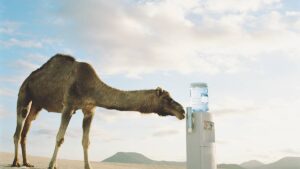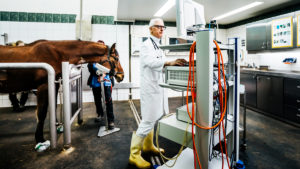Hot Money Monday: Proteomics brings science to racehorse recovery, as animal health booms

Proteomics’ OxiDx spots hidden muscle damage before it breaks horses. Picture via Getty Images
- New blood test reveals hidden muscle damage in racehorses
- Proteomics’ OxiDx helps trainers spot injuries early and avoid breakdowns
- ASX-listed stocks with exposure to the animal sector.
In the high-octane world of thoroughbred racing, muscle is money.
Every gallop, every second shaved off the clock comes down to conditioning, training, and recovery.
But what happens when something breaks, and you don’t even know it?
That’s the riddle Proteomics International Laboratories (ASX:PIQ) and its subsidiary OxiDx are solving with a groundbreaking new test that can detect muscle damage in racehorses.
Last Monday, Proteomics announced a major update.
Its patented OxiDx test has now proven – via peer-reviewed research – that it can track oxidative stress and pinpoint muscle injury in thoroughbred racehorses post-race.
In short: trainers and vets now have hard data instead of relying on gut feel.
Published in Veterinary Medicine and Science, the study tracked 34 Australian racehorses across seven days after racing.
Using a dried blood spot from each horse, the OxiDx test measured thiol-oxidised albumin, a protein biomarker of oxidative stress.
The findings were clear: oxidative stress levels peaked two days after a race and stayed elevated for up to five. Some horses took even longer to recover.
That variability suggests that one horse might bounce back after 48 hours, while another might still be nursing invisible damage a week later.
And if you’re a trainer pushing too hard, too soon, that kind of hidden strain can lead to breakdowns.
In fact, up to 85% of thoroughbreds suffer at least one injury during their early racing years, many of them muscle-related and many going undiagnosed until it’s too late.
OxiDx redefines racehorse recovery
What makes this test so compelling is its simplicity.
Forget MRI scans or expensive ultrasounds, and forget relying on subjective gait assessments or enzyme tests.
This is a world-first blood test. Non-invasive, stable, and gives trainers and vets something they’ve never had before: objective insight into how a horse is actually recovering.
“These exciting results mark a significant milestone in applying the OxiDx test to equine veterinary medicine,” said Proteomics’ CEO, Dr Richard Lipscombe.
“OxiDx has the potential to empower trainers to monitor muscle recovery with precision, helping their racehorses achieve peak performance while prioritising equine health and well-being.”
This is all about protecting high-value assets. After all, elite racehorses are routinely valued in the millions, and breeding stallions commanding even higher figures.
OxiDx seems to have a first-mover foothold in this lucrative corner of the market.
If all goes to plan, PIQ said the OxiDx test could be hitting Aussie stables by this time next year, potentially becoming a go-to tool for trainers.
Animals are serious business
While most of the world has its eye on human medicine, the animal health sector has been galloping ahead, quietly becoming one of the hottest areas in biotech.
If you dig into the numbers, animal diagnostics is a actually billion-dollar market that’s been growing faster than many areas of human healthcare.
The market is driven by rising pet ownership and humanisation, growing demand for livestock productivity, and in this case, the high economic value of performance animals.
It’s serious business, especially when the animals in question are worth more than most houses.
Other animal-relates stocks on the ASX
Apiam is Australia’s biggest rural and regional vet group, with boots on the ground from dairy farms to dog parks in over 70 locations nationwide.
It’s got 330-plus vets and a serious logistics backbone – warehouses in four states, national lab networks, and even eCommerce for livestock producers.
And now, Apiam is rolling out CoVet, an AI-powered clinical tool that’s already making traction in its network.
Using voice recognition and smart templates, CoVet takes care of the boring stuff like generating notes and discharging instructions so vets can spend less time typing and more time treating.
In June, Apiam appointed seasoned executive Bruce Dixon as interim managing director, following the departure of founding CEO Dr Chris Richards.
Mad Paws is Australia’s go-to marketplace for pet care, connecting pet owners with trusted sitters, walkers, groomers, and a growing range of pet products and services.
Launched in 2014, the company was built to solve the age-old question: “What do I do with my pet when I’m away?”
With 73% of Aussie households already owning pets, and spending over $3,000 per year on dogs alone, the market is big, sticky, and recession-resistant.
And with consumer trends like pet humanisation on the rise, Mad Paws could be positioned to ride the wave.
While not directly in the pet or animal business, Aroa’s use of ovine tissue put it in a unique position at the intersection of animal-derived innovation and human health.
The New Zealand-born medtech company uses something pretty special to help the human body heal – tissue from the forestomach of sheep.
Led by vet-turned-founder Dr Brian Ward, Aroa discovered that ovine tissue, particularly the extracellular matrix (ECM), closely mirrors human soft tissue and is packed with over 150 proteins vital to healing.
After carefully stripping the tissue of cells and DNA, what’s left is a natural scaffold that guides the body to regenerate itself, helping tissue repair in complex wounds.
With FDA approvals, regulatory clearance in 50 countries, and standout clinical results, the company is hitting its stride.
At Stockhead we tell it like it is. While Aroa Biosurgery is a Stockhead advertiser at the time of writing, it did not sponsor this article.
This story does not constitute financial product advice. You should consider obtaining independent advice before making any financial decision.
Related Topics
UNLOCK INSIGHTS
Discover the untold stories of emerging ASX stocks.
Daily news and expert analysis, it's free to subscribe.
By proceeding, you confirm you understand that we handle personal information in accordance with our Privacy Policy.








